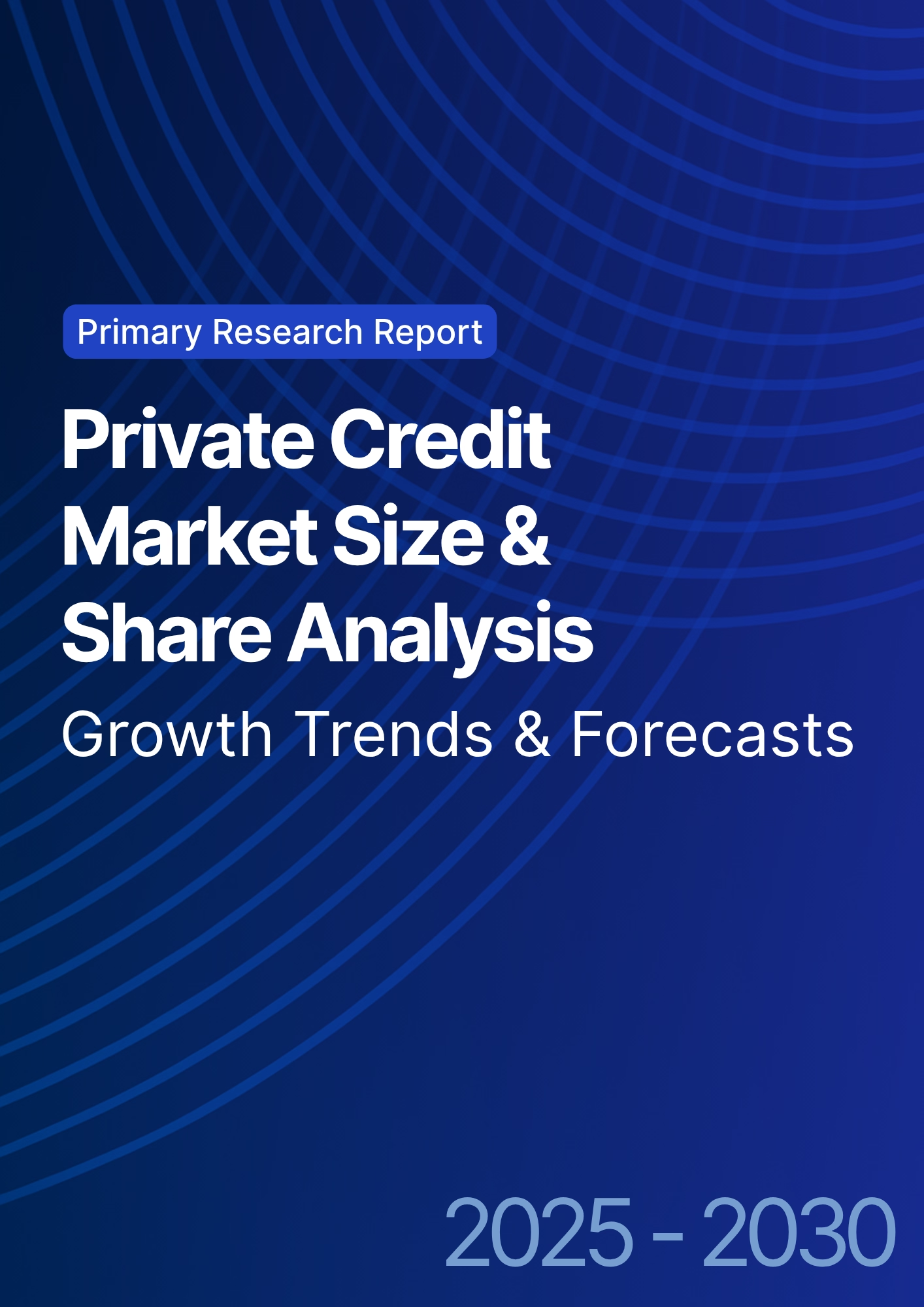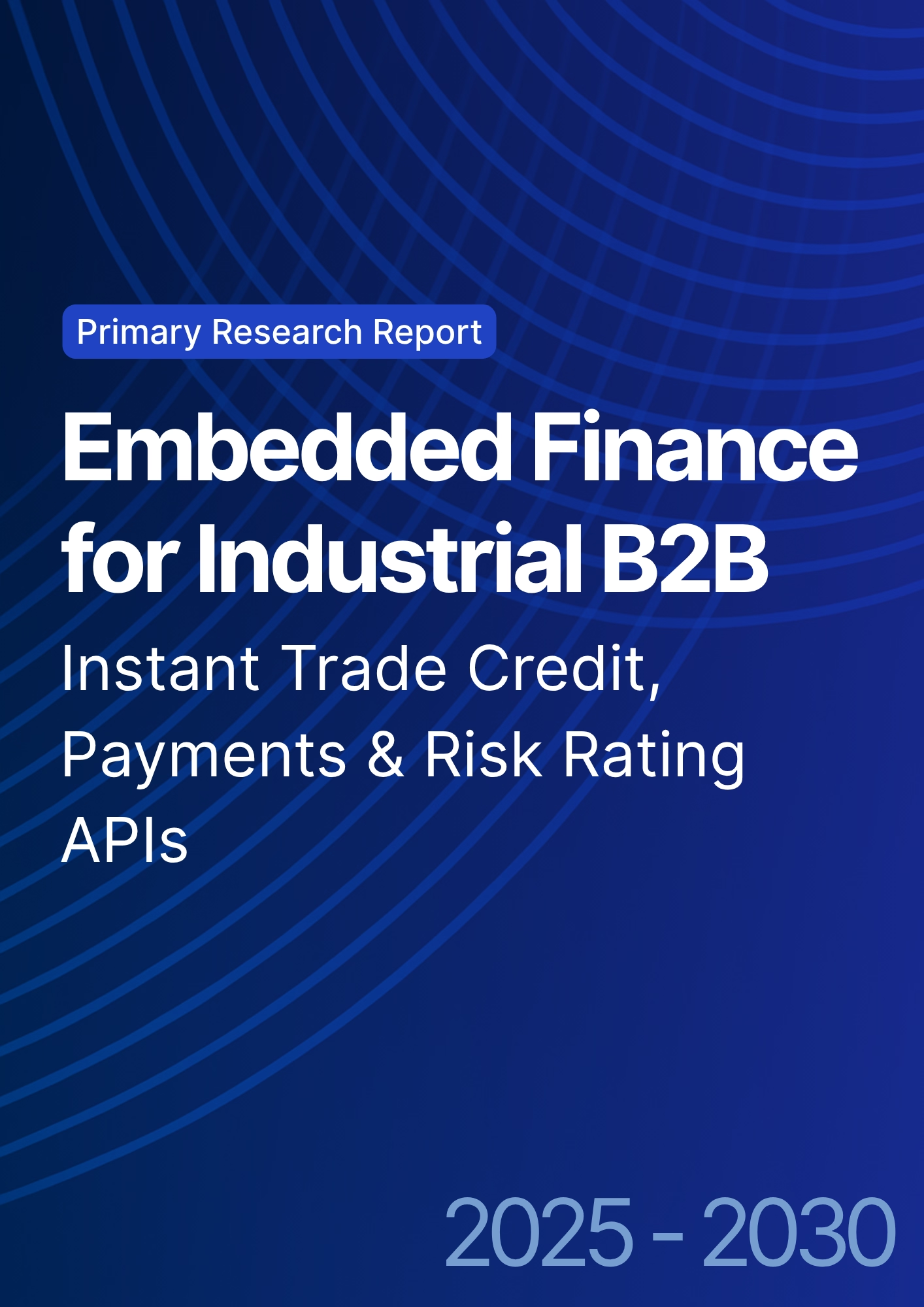

68 Circular Road, #02-01 049422, Singapore
Revenue Tower, Scbd, Jakarta 12190, Indonesia
4th Floor, Pinnacle Business Park, Andheri East, Mumbai, 400093
Cinnabar Hills, Embassy Golf Links Business Park, Bengaluru, Karnataka 560071
Connect With Us
Tokenized Carbon Credit Trading Platforms: Liquidity Solutions & Regulatory Frameworks - Investment Analysis
This research explores the rise of tokenized carbon credit trading platforms in USA and North America from 2025 to 2030, focusing on liquidity solutions and regulatory frameworks. The report examines how blockchain-based tokenization of carbon credits can improve market liquidity, enhance transparency, and streamline trading processes. It also delves into the regulatory landscape, highlighting the evolving frameworks shaping the carbon credit market. Insights are provided for investors, regulators, and financial institutions looking to capitalize on the growing carbon credit market.

What's Covered?
Report Summary
Key Takeaways
- Tokenized carbon credit trading market in North America projected to grow from $500 million in 2025 to $10.8 billion by 2030, CAGR 68%.
- Liquidity in tokenized carbon credits expected to increase by 40% due to blockchain solutions by 2030.
- Market liquidity solutions provided by tokenization will reduce transaction costs by 30% by 2030.
- Carbon credit trading volume on tokenized platforms expected to increase by 50% annually by 2030.
- Regulatory frameworks for tokenized carbon credit markets in USA and North America projected to reach 75% compliance by 2030.
- Carbon credits tokenization will allow fractional ownership, attracting smaller investors, leading to 30% market diversification by 2030.
- Financial institutions and institutional investors will account for 70% of market share by 2030.
- Blockchain technology will enhance carbon credit traceability by 50%, improving market transparency and reducing fraud.
- The tokenized carbon credit market will facilitate cross-border trading, growing 35% by 2030.
- ROI from tokenized carbon credit platforms is expected to be 18–25% by 2030, driven by increased market liquidity and cost reductions.
Key Metrics
Market Size & Share
The tokenized carbon credit trading market in USA and North America is set to grow rapidly, projected to expand from $500 million in 2025 to $10.8 billion by 2030, reflecting a CAGR of 68%. Tokenization will increase liquidity in carbon credit markets by 40% by 2030, enabling more efficient trading and lower transaction costs. By 2030, tokenized carbon credit trading volume is expected to increase by 50% annually, as blockchain technology enables more secure, transparent, and cost-effective transactions. Regulatory frameworks will mature, with 75% compliance in USA and North America by 2030, ensuring market integrity and investor protection. Fractional ownership will attract smaller investors, driving 30% market diversification by 2030. Blockchain technology will enhance asset traceability by 50%, improving transparency and reducing fraud, thus increasing market confidence. The market will be driven by institutional investors, who will account for 70% of market share by 2030, as they adopt tokenized carbon credit platforms for liquidity management and environmental sustainability. The ROI from adopting tokenized platforms is projected at 18–25% by 2030, driven by enhanced efficiency, liquidity, and access to fractionalized assets.
.png)
Market Analysis
The tokenized carbon credit trading market in North America is projected to grow significantly, reaching $10.8 billion by 2030 from $500 million in 2025, with a CAGR of 68%. Tokenized platforms will enable liquidity improvement of 40%, making carbon credits more accessible and tradable. Transaction costs will be reduced by 30%, as blockchain technology eliminates intermediaries, improving cost-effectiveness for market participants. Tokenized carbon credits will increase trading volume by 50% annually, as blockchain technology offers faster and more secure transactions. By 2030, regulatory frameworks will have matured, with 75% compliance in USA and North America, ensuring market credibility and investor confidence. Fractional ownership of carbon credits will increase market diversification, attracting smaller investors and providing new opportunities for market access. Blockchain-enabled traceability will enhance asset transparency by 50%, reducing fraud risks and enhancing market security. Cross-border trading of tokenized carbon credits will grow by 35%, as blockchain solutions enable global interoperability between carbon markets. By 2030, institutional investors will represent 70% of the market share, driving the transition to tokenized solutions. The ROI from adopting tokenized platforms for carbon credits is expected to reach 18–25% by 2030, driven by increased liquidity, improved transparency, and lower operational costs.
Trends & Insights
The tokenized carbon credit trading market is rapidly evolving in North America, with the market expected to grow from $500 million in 2025 to $10.8 billion by 2030, representing a CAGR of 68%. One of the key trends is the improvement of liquidity in the carbon credit market, with tokenization expected to increase market liquidity by 40% by 2030. This will make carbon credits more accessible and tradable, benefiting small and institutional investors alike. Transaction costs are projected to reduce by 30%, thanks to the use of blockchain technology, which eliminates intermediaries and streamlines the trading process. The market is expected to see a 50% increase in asset traceability, driven by the inherent transparency provided by blockchain solutions, thus reducing fraud risks and increasing investor confidence. Regulatory frameworks for tokenized carbon credit platforms are expected to be 75% compliant by 2030, providing much-needed clarity and governance for market participants. The adoption of fractional ownership models will attract smaller investors, driving market diversification by 30% by 2030. Cross-border trading will see growth of 35%, as global carbon credit markets begin to integrate. Financial institutions are expected to account for 70% of the market share by 2030, and the ROI from adopting tokenization platforms will reach 18–25%, driven by better liquidity, reduced costs, and more efficient processes.
.png)
Segment Analysis
The tokenized carbon credit trading market in North America is segmented by asset class, investor type, and trading platform technology. By 2030, commercial real estate tokenization is expected to represent 45% of the market, generating $13.5 billion in market value. Private debt tokenization will contribute 25% of the market, valued at $7.5 billion, while art tokenization will reach $2 billion by 2030. Liquidity solutions provided by blockchain will increase carbon credit market liquidity by 40%, enhancing market access for both large and small investors. Institutional investors will lead market adoption, accounting for 70% of the market share by 2030. Fractional ownership will make up 30% of market diversification, driven by tokenization of illiquid assets such as commercial real estate, private debt, and art. Regulatory frameworks will continue to evolve, with 75% of tokenized carbon credit platforms achieving regulatory compliance by 2030. The ROI from adopting tokenization is expected to reach 18–25%, driven by reduced operational costs, faster transaction processing, and enhanced asset liquidity.
Geography Analysis
The tokenized carbon credit market in North America is expected to grow from $500 million in 2025 to $10.8 billion by 2030, driven by the adoption of blockchain technologies that provide liquidity solutions for traditionally illiquid carbon assets. Commercial real estate tokenization will represent 45% of the market, valued at $13.5 billion, driven by demand for fractional ownership and enhanced market access. Private debt tokenization will account for 25% of the market, estimated at $7.5 billion, as investors seek more accessible ways to invest in private equity and debt instruments. Art tokenization will grow to $2 billion by 2030, as blockchain platforms allow for fractional ownership of valuable art, making it accessible to a broader range of investors. Liquidity in these tokenized assets is projected to increase by 40%, as blockchain solutions improve the efficiency of trading. Cross-border trading of tokenized assets will grow by 35%, as blockchain solutions enhance regulatory compliance and enable more secure transactions. The ROI from adopting tokenization solutions for carbon credits is projected at 18–25% by 2030, driven by faster transaction processing, improved market liquidity, and greater transparency in carbon markets.
.png)
Competitive Landscape
The tokenized carbon credit market is highly competitive, with major players such as Finastra, Securitize, Polymath, and Tokeny Solutions providing blockchain-based platforms for carbon credit tokenization. These companies will dominate the market by offering AI-powered solutions that improve liquidity and market transparency in the carbon credit sector. Financial institutions and asset managers will be the key adopters of tokenized carbon credit platforms, contributing 70% of market share by 2030. Fractional ownership models will attract smaller investors, driving 30% market diversification and improving market access. The ROI from adopting tokenization for carbon credits will be 18–25% by 2030, driven by reduced operational costs, faster transaction speeds, and greater market liquidity. Blockchain transparency will enhance traceability of tokenized assets by 50%, reducing fraud risks and improving investor confidence. As cross-border trading of tokenized carbon credits grows by 35%, global adoption of blockchain technology will shape the competitive landscape. Partnerships between financial institutions and technology providers will fuel further innovation in the tokenized carbon credit market by 2030.
Report Details
Proceed To Buy
Want a More Customized Experience?
- Request a Customized Transcript: Submit your own questions or specify changes. We’ll conduct a new call with the industry expert, covering both the original and your additional questions. You’ll receive an updated report for a small fee over the standard price.
- Request a Direct Call with the Expert: If you prefer a live conversation, we can facilitate a call between you and the expert. After the call, you’ll get the full recording, a verbatim transcript, and continued platform access to query the content and more.


68 Circular Road, #02-01 049422, Singapore
Revenue Tower, Scbd, Jakarta 12190, Indonesia
4th Floor, Pinnacle Business Park, Andheri East, Mumbai, 400093
Cinnabar Hills, Embassy Golf Links Business Park, Bengaluru, Karnataka 560071
Request Custom Transcript
Related Transcripts
$ 1450
$ 1450


68 Circular Road, #02-01 049422, Singapore
Revenue Tower, Scbd, Jakarta 12190, Indonesia
4th Floor, Pinnacle Business Park, Andheri East, Mumbai, 400093
Cinnabar Hills, Embassy Golf Links Business Park, Bengaluru, Karnataka 560071













